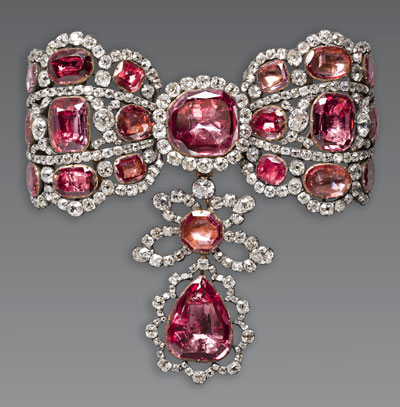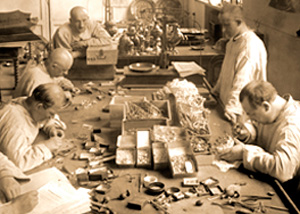HISTORY OF THE DIAMOND FUND


First half of the 18th century
A unique collection of masterpieces of the jeweler's art of the 18th, 19th and 20th centuries, precious stones, insignia, gold and platinum nuggets are closely connected with the history of the Russian state.
Official formation of the collection began in the first half of the 18th century, when Emperor Peter the Great decided to create a state depository of crown valuables. In 1719 a special agency “Kamer Сollegium” was organized and its Charter accurately registered all current regalia and the established procedures for their storage.
The idea of Peter the Great to create the symbols of power of national importance was later extended to other valuables. The Charter and the personnel in charge of the crown jewels changed with each new ruler.

Second half of the 18th century - the 19th century
The crown jewels were stored in a specially protected area - the Chambers of His or Her Majesty, also called the Diamond Room.
In 1764 during the reign of Catherine II the front bedchamber of the Empress was redesigned to house the Diamond Room. Contemporaries described it as the richest chamber full of treasures. Its interior was specially designed by architect Yu.M. Felten.

First half of the 20th century
At the beginning of World War I with the approach of the front to St. Petersburg the Imperial regalia, the crown jewels, the Imperial Family Tree Book and the family testaments were evacuated to the Moscow Kremlin and placed at the Crown Hall of the Armory.
The evacuation was carried out in a hurry but the valuables were handled with incredible care. Among other things, the valuables also contained the 1898 Inventory Book with re-estimated value for every single item of the treasures. This document served as the source for further study of the collection and its description.

Second half of the 20th - early 21st century
The 1950s opened a new page in the development of the country resources. In 1954 Ludmila Popugaeva, a geologist from Leningrad, found the first diamond kimberlite pipe "Zarnitsa". One of the largest diamond deposits in Yakutia – the pipe "MIR" – was discovered in 1955. The Gokhran collection was enriched with a number of large diamonds and articles of modern jewelers. The Diamond Fund also keeps a unique collection of gold and platinum nuggets including the famous mineralogical collection of Catherine II.
A temporary exhibition of the Diamond Fund was opened at the premises of the Armory Chamber on November 2, 1967 to commemorate the 50th anniversary of the Soviet state. On this occasion it was decided to show the exhibition to guests who came to Moscow for the celebrations. It was intended that the unique exhibits will be on display for a year and then they were to be returned for storage in the Gokhran. But the exhibition became a major event in the cultural life of the country and turned out to be such a success that the government decided to make it permanent.
